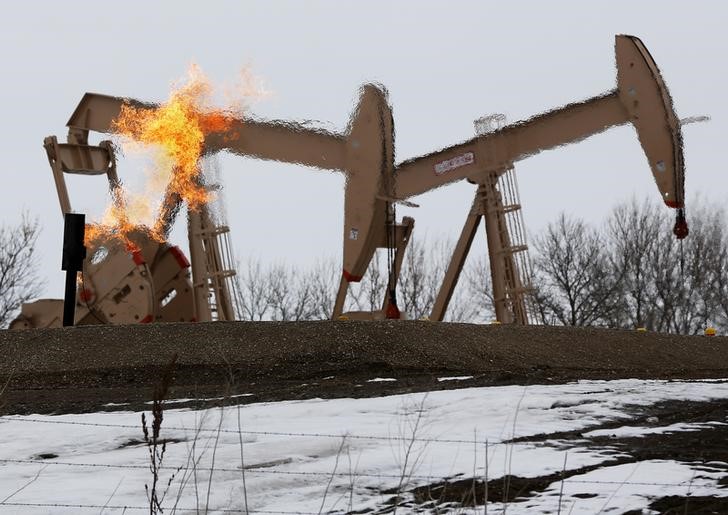By Peter Nurse
Investing.com -- Oil prices rose Thursday, climbing from a three-week low amid concerns about tight supplies even after major consuming nations announced plans to release a hefty amount of crude from strategic supplies.
By 8:45 AM ET (1245 GMT), U.S. crude futures traded 1.5% higher at $97.67 a barrel, while the Brent contract rose 1.2% to $102.28.
U.S. Gasoline RBOB Futures were up 1.3% at $3.0873 a gallon.
Both crude benchmarks plunged more than 5% on Wednesday to hit their lowest closing levels since March 16 after International Energy Agency member countries agreed to release 60 million barrels of crude from their emergency reserves in an attempt to drive down prices.
This follows the announcement by the Biden administration last week of a 180 million-barrel release from the U.S. Strategic Petroleum Reserve.
“These volumes are significant, although still fall short of the 2MMbbls/d of Russian losses that we estimate due to self-sanctioning,” said analysts at ING, in a note. ”Whilst the SPR release has put pressure on the front end of the curve, further down the curve we have seen strength, given the expectation that stockpiles will need to be replenished at a later date.”
Yet, despite these additional barrels hitting the global market, the crude market remains around the $100/bbl level with the sanctions imposed on Russia following its invasion of Ukraine adding to an already tight market.
So far the European Union has avoided imposing sanctions on Russia oil and gas sectors, given the reliance a number of the countries, and Germany in particular, have on imports from Russia.
However, the pressure on the bloc is rising as stories mount about atrocities committed by Russian troops on Ukrainian civilians.
Ukraine on Thursday reiterated a demand that the EU impose a full oil and gas embargo on Russia, as the country’s Foreign Minister Dmytro Kuleba addressed NATO members at a meeting designed to maintain support for sanctioning Russia.
Elsewhere, data from the Energy Information Administration, released Wednesday, showed U.S. oil inventories rose by over 2 million barrels last week, the first climb in three weeks, raising questions about energy demand in the world’s largest oil-consuming country.
In addition, the lockdown at China’s financial hub Shanghai has stretched into its 11th day, with data showing that average flight movements in China are at their lowest since the very depths of the initial COVID-19 panic in Wuhan two years ago.
China is the largest importer of crude in the world, and a prolonged lockdown could have a significant impact on global demand over time.
